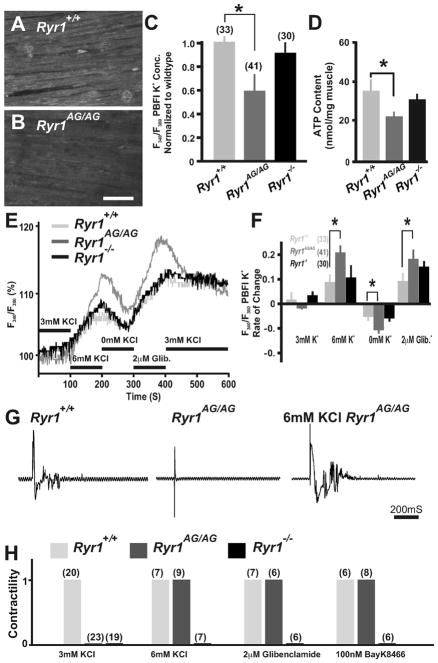Fig. 3.
Ryr1AG/AG muscle regains contractility with masked potassium leak. (A, B) Fluorescence imaging of PBFI at 340 nm in Ryr1+/+ (A) and Ryr1AG/AG (B) diaphragm in 3 mM Ringers solutions. Scale bar=50 μM. (C) Ratiometric potassium imaging obtained at 340 and 380 nm wavelengths provided a ratio of fluorescence in Ryr1+/+ (light gray), Ryr1AG/AG (dark gray) and Ryr1−/− (black) diaphragm muscle (normalized to Ryr1+/+). (D) ATP determination of E18.5 muscles. (E) Representation of the ratiometric imaging experimental paradigms for Ryr1+/+ (light gray), Ryr1AG/AG (dark gray) and Ryr1−/− (black) diaphragm muscle with bath applications of 3 mM KCl, 7 mM KCl, 0 mM KCl and 3 mM KCl with 2 μM glibenclamide in Ringers solutions. (F) Change of intracellular K+ fluorescence intensities in experimental conditions. (G) EMG recordings of diaphragm muscle from Ryr1+/+, Ryr1AG/AG, or Ryr1AG/AG treated with 6 mM KCl. (H) Analysis of contractility of E18.5 diaphragm muscle from Ryr1+/ +, Ryr1AG/AG, or RyR1−/− embryos. After equilibration, all samples were bathed first in 6 mM KCl, followed by wash out and then addition of one of the following conditions as indicated (3 and 6 mM KCl, 2 μM glibenclamide and 100 nM Bay K8644; n for experiments above bars).

